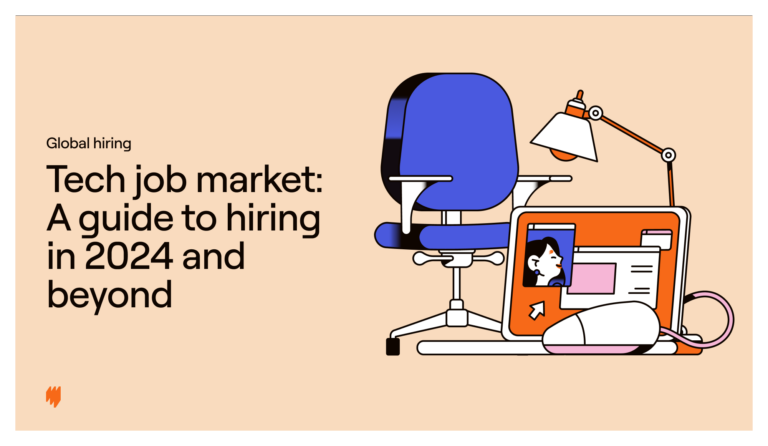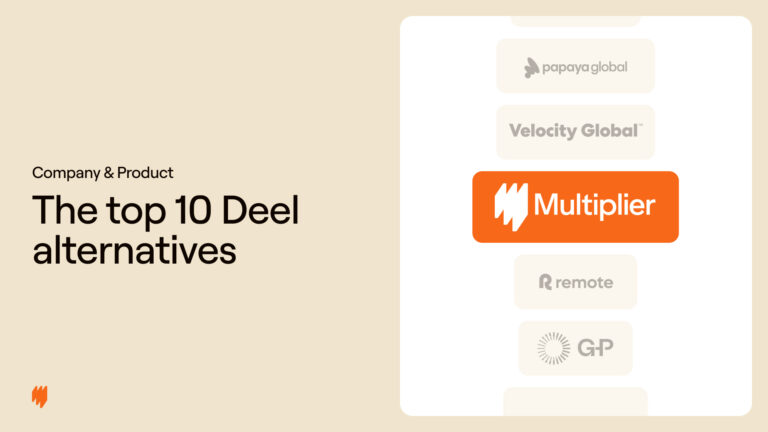More and more small to medium-sized businesses now operate globally, bringing together a workforce that spans generations, cultures, and time zones.
This offers immense opportunities, diverse skills, enhanced creativity, and better decision-making, but it also presents challenges.
Organizations striving to harness the potential of a diverse and distributed workforce must learn to bridge generational divides, foster cross-cultural collaboration, and break down organizational silos.
This article explores the obstacles to managing distributed teams and provides best practices and strategies to lead a diverse, global team.
The challenges of global workforce management
Managing a distributed workforce has numerous hurdles to overcome. Some of the top contenders are finding a balance between multiple generations and cultures, figuring out which meeting times are best for everyone’s time zone, and preventing your teams from becoming isolated.
Overlapping generations
Today’s workplace consists of four generations, each with distinct work styles and expectations. You need to understand all of them to foster a cohesive and dynamic work environment.
This means considering:
- Baby Boomers (Born 1946-1964)
- Generation X (Born 1965-1980)
- Millennials (Born 1981-1996)
- Generation Z (Born 1997-2012)
Baby Boomers favor face-to-face interactions and traditional work models but are adapting to new ways of working and technology. Meanwhile, Millennials value direct and transparent communication and are very tech-savvy.
Generation X often serves as a bridge between the older and younger generations. And Gen Z, the most diverse generation to enter the workforce, values inclusivity and social responsibility. They seek employers who share these principles and expect their employers to promote and practice inclusivity throughout the workforce.
Clash of cultures and time zones
Multicultural teams bring diverse perspectives and ideas but also communication challenges. 12% of businesses have reported losing employees due to communication issues in their business.
Language barriers can lead to misunderstandings; even with a shared common language, cultural nuances can cause confusion or offense. Every culture has its own traditions and values, and this can lead to clashes or feelings of exclusion.
What’s more, managing employees across various time zones can exacerbate the problem. It’s essential for everyone to come together to feel connected and included so that you can prevent feelings of isolation and disconnection. However, coordinating meetings that everyone can attend can be difficult.
The threat of organizational silos
Organizational silos form when teams and departments work independently. And this issue is exacerbated by geographical, cultural, and time zone differences.
80% of global organizations now admit to having silos. Often, this means communication and collaboration issues, increased inefficiencies, and poor synergy.
Silos also restrict the flow of valuable information, confining insights and best practices to specific groups rather than helping them benefit the entire organization. This results in inconsistencies in processes and a lack of unified direction.
A better way to manage distributed teams
How distributed and diverse teams perform depends on the strategies you employ. Here we explore some key elements of a strong global workforce strategy.
Acknowledge each generation’s strengths
Recognizing and valuing each generation’s unique contributions is essential for successfully managing a multigenerational workforce. It’s important to foster an inclusive company culture that promotes respect and understanding across all age groups.
To successfully manage a multigenerational workforce, it’s crucial to recognize and value the unique contributions each generation brings. Companies can achieve this by implementing flexible work arrangements, promoting cross-generational mentorship, and understanding employees beyond their generational characteristics.
You should also address miscommunication promptly, using these moments to educate on different communication styles. Ensure everyone respects each other’s communication preferences and work styles.
Respect cultural differences
When you’re managing a global team, you need to act as the glue that brings everyone together… Provide cultural sensitivity training to help employees learn about each other’s backgrounds to foster comfort and reduce cultural misunderstandings. Encourage open dialogue about cultural differences such as beliefs, social norms, professional etiquette, and work styles.
You should also schedule virtual meetings that consider everyone’s time zones, granting employees a safe place to share their thoughts, concerns, and ideas. Taking this approach helps create a sense of unity and keeps everyone aligned with company goals and progress.
Break down silos before they appear
Encouraging collaboration and open communication can dismantle silos before they form. Implement communication platforms that connect employees worldwide and use virtual meetings and company town halls to share pertinent information and company objectives.
Cross-functional projects and interdepartmental initiatives also directly promote collaboration and unity. Consider pairing up groups or departments that don’t usually work together to reduce the chances of a silo being built.
Prioritize inclusivity at every level
Creating an inclusive environment in global teams requires a commitment to equitable compensation and tailored benefits. It’s crucial to ensure that all employees are paid fairly for their roles, regardless of their location.
This involves conducting regular market salary reviews and aligning pay structures to reflect the true value of each position within your organization.
Moreover, tailoring benefits to meet the specific needs of employees in different regions is vital. Using an EOR like Multiplier to navigate local legal requirements and cultural expectations allows you to provide relevant perks.
An easier approach to global workforce management
Managing a diverse team has its challenges, but it also offers huge benefits.
As our CEO, Sagar Khatri says, “Today, we have a customer base across 60-70 countries. How do you create a product used by such diverse people, [and] such diverse buyers across the globe? By incorporating that diversity into your company’s DNA.”
To assist you on your journey to support a distributed workforce, Multiplier offers complete hiring and management support across the globe, localized benefits, and streamlined HR functions from a single platform.
Make global workforce management a breeze. Speak with one of our experts today.

Beth Longman
Content Writer
Beth Longman is a content writer at Multiplier. With extensive experience in SaaS, she combines data with storytelling to create engaging pieces.





